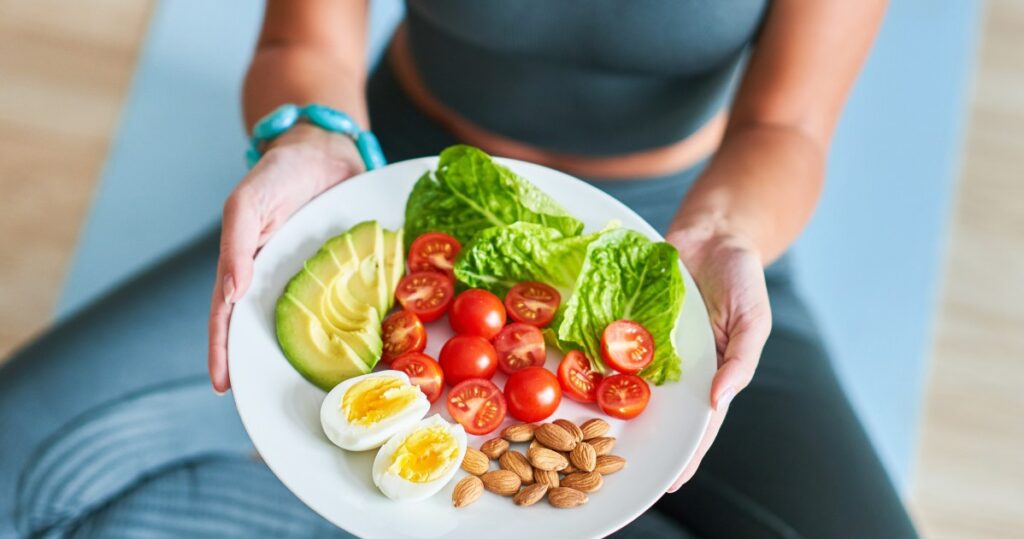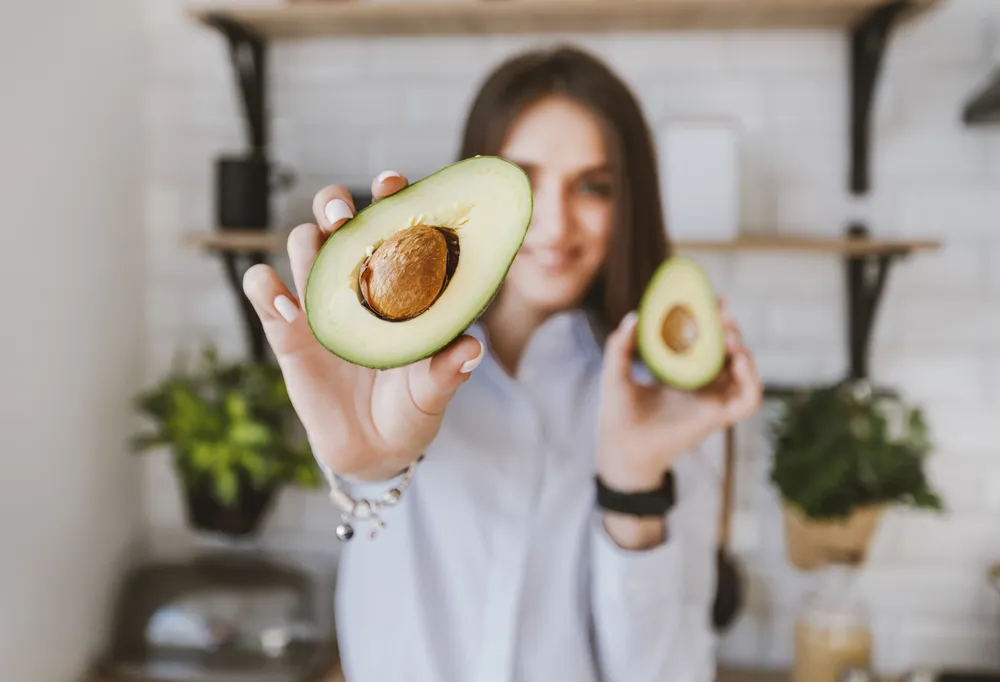The ketogenic diet can be a transformative approach to weight loss and health improvement. However, many individuals encounter challenges when transitioning to a low-carb lifestyle, such as managing cravings, meal planning, and navigating social situations. This article addresses these common obstacles, offering practical strategies and tips to help you stay on track with your keto journey. By implementing the insights provided, you can enhance your experience and achieve your dietary goals more effectively.
Table of Contents
Understanding the Science Behind Ketosis
Ketosis is a metabolic state that has gained significant attention in recent years, particularly within the realm of weight loss and health optimization. But what exactly happens in our bodies during ketosis? To comprehend this, we need to explore the biochemical processes that lead to ketosis, the role of ketones, and the advantages of adopting a ketogenic lifestyle.
What is Ketosis?
Ketosis is a state in which the body, instead of relying on glucose for energy, shifts to burning fat. This transition occurs when carbohydrate intake is drastically reduced, leading to lower insulin levels. As a result, the liver begins to convert fatty acids into ketone bodies, which serve as an alternative fuel source for the brain and other tissues.
The Biochemistry: From Glucose to Ketones
In a typical metabolic process, carbohydrates consumed in meals are broken down into glucose, the primary energy source for our cells. When carbohydrates are limited, such as in a ketogenic diet, the body adapts by:
- Reducing insulin levels: Lower carb intake leads to a decrease in insulin secretion, promoting fat breakdown.
- Increasing fatty acid mobilization: As insulin drops, stored fat is released into the bloodstream.
- Producing ketones: The liver converts these fatty acids into ketones—primarily acetoacetate, beta-hydroxybutyrate (BHB), and acetone—which are then utilized by various organs as energy.
This shift not only conserves glucose for cells that require it, like red blood cells, but it also enables sustained energy levels throughout the day, as fat stores are more abundant than carbohydrate reserves.
Types of Ketones and Their Functions
There are three primary types of ketones produced during ketosis:
- Acetoacetate (AcAc): The first ketone produced from fatty acid breakdown, which can be converted into the other types as needed.
- Beta-hydroxybutyrate (BHB): Although not technically a ketone, BHB is the most abundant and provides the majority of energy to the brain and muscles during prolonged fasting or carbohydrate restriction.
- Acetone: This ketone is primarily exhaled and is often associated with the breath of individuals in ketosis. Its presence can be detected using breath analyzers.
These ketones can effectively cross the blood-brain barrier, providing a vital energy source that supports cognitive function during periods of low glucose availability.
The Advantages of Ketosis
Adopting a ketogenic diet and entering ketosis can lead to several health benefits, including:
- Weight Loss: Enhanced fat burning, reduced hunger, and improved satiety can lead to more effective weight management.
- Improved Mental Clarity: Many individuals report enhanced focus and clarity while in ketosis, likely due to the consistent supply of energy from ketones.
- Stable Blood Sugar Levels: Lower insulin levels contribute to better blood sugar regulation, which can be beneficial for those with insulin resistance or Type 2 diabetes.
- Enhanced Physical Endurance: Ketones provide a longer-lasting energy source during endurance activities compared to carbohydrate glycogen stores.
How to Induce Ketosis Safely
Entering ketosis should be approached thoughtfully. Here are several guidelines to achieve it safely and effectively:
- Limit Carbohydrates: Aim for a daily carbohydrate intake of 20 to 50 grams to initiate ketosis.
- Increase Healthy Fats: Focus on nutrient-dense sources of fat such as avocados, nuts, seeds, and healthy oils.
- Moderate Protein Intake: Consume adequate protein while avoiding excess, as too much can be converted back to glucose through gluconeogenesis.
- Stay Hydrated: Drink plenty of water, as ketosis can lead to increased water loss due to lower insulin levels.
Ultimately, understanding the science behind ketosis opens up avenues for individuals seeking to enhance their health and optimize their energy levels. As you delve deeper into the world of keto, you’ll find that the physiological changes not only transform your body but also encourage a balanced approach to nutrition.
For more in-depth insights into fasting, metabolic health, and ketogenic principles, consider exploring reputable resources like the National Institutes of Health.
Essential Tips for Meal Planning on Keto
Meal planning is a pivotal component of a successful ketogenic (keto) diet. It helps navigate the challenges of daily meal preparation while ensuring that you stay within your daily macronutrient goals. Here, we delve into essential tips that can streamline your meal planning process, making your keto journey not only feasible but enjoyable.
1. Understand Your Macros
Before diving into meal preparation, it’s crucial to understand your macronutrient needs on a keto diet. The typical macronutrient ratio for keto is approximately 70-75% fat, 20-25% protein, and 5-10% carbohydrates. Utilize online keto calculators to determine your ideal macro ratios based on your weight, goals, and activity level.
2. Create a Weekly Meal Plan
Planning your meals for the week can save you time, money, and stress. Start by selecting 5-7 low-carb meals that you can rotate throughout the week. Here’s how you can structure your meal plan:
- Choose a Protein Source: Chicken, beef, fish, or plant-based proteins such as tofu.
- Pick Your Vegetables: Focus on leafy greens, broccoli, cauliflower, and zucchini.
- Select Healthy Fats: Olive oil, avocados, nuts, and seeds are ideal choices.
3. Meal Prep in Batches
One of the most effective strategies for sticking to your keto diet is batch meal prep. By cooking in larger quantities, you can store meals in the fridge or freezer for quick, convenient access throughout the week. This not only saves time but also ensures that you always have keto-friendly options on hand, reducing the temptation to reach for non-keto foods.
4. Invest in Quality Storage Containers
Having the right storage containers can make a world of difference in maintaining the freshness of your prepared meals. Invest in high-quality, airtight containers that are safe for both the fridge and freezer. Clear containers are particularly helpful as they allow you to see what you have readily available at a glance.
5. Incorporate Variety and Flavors
A common pitfall in meal planning is falling into a rut with repetitive meals. To keep your taste buds engaged, incorporate different herbs, spices, and cooking methods. Try roasting, grilling, or sautéing proteins and veggies to introduce diverse flavors. Experiment with keto-friendly sauces and dressings, such as creamy avocado dressing or homemade pesto, to enhance your dishes.
6. Keep a Keto Pantry
Having a well-stocked keto pantry can help you whip up a meal at a moment’s notice. Stock up on staples like:
- Almond flour
- Eggs
- Coconut oil
- Canned tuna or chicken
- Cheese and deli meats
A stocked pantry not only simplifies meal prep but also prevents derailment from your diet during busy weekdays.
7. Schedule Time for Grocery Shopping
To ensure you have all the ingredients for your planned meals, schedule a weekly grocery shopping trip. Make a detailed list based on your meal plan to avoid impulse buys and ensure you get everything you need to stay on track. This practice reduces the likelihood of running out of supplies and resorting to non-keto options.
8. Use Useful Apps and Resources
Several apps can streamline your meal planning process by helping you track your macros and generate meal ideas. Apps like Cronometer and MyFitnessPal can facilitate easier tracking of your meals and macronutrient intake. Utilizing these tools can lead to better adherence to your keto diet and make meal planning much more efficient.
By implementing these essential tips into your meal planning routine, you can simplify your ketogenic lifestyle, ensuring that your meals remain delicious, nutritious, and aligned with your dietary goals. With a solid plan in place, you’re more likely to achieve long-term success on your keto journey.
Delicious Low-Carb Recipes for Every Taste
Transitioning to a low-carb diet can be a delightful culinary journey. With an array of flavors and textures, you won’t have to sacrifice your taste buds for health. Here’s a collection of delicious low-carb recipes that cater to every palate, from savory to sweet, ensuring that your meals are both satisfying and nutritious.
1. Savory Breakfast Options
Start your day with these scrumptious low-carb breakfasts that will keep you energized without the carb overload:
- Spinach and Feta Omelette
Whisk together eggs, fresh spinach, and crumbled feta cheese. Cook in a non-stick skillet for a protein-packed start to your morning. - Coconut Flour Pancakes
Combining coconut flour with eggs, almond milk, and a touch of vanilla extract creates fluffy pancakes that are keto-friendly and perfect with a dollop of sugar-free syrup. - Avocado Egg Boats
Halve an avocado, remove the pit, and crack an egg into the center. Bake until the egg is set for a creamy, nutrient-rich breakfast.
2. Satisfying Lunch Ideas
Enhance your midday meal with these flavorful low-carb recipes that are easy to prepare and great for meal prepping:
- Cauliflower Fried Rice
Pulse cauliflower florets in a food processor until rice-sized, then stir-fry with vegetables, soy sauce, and your choice of protein for a light yet satisfying lunch. - Grilled Chicken Salad
Toss mixed greens with grilled chicken, cherry tomatoes, avocado, and a lemon vinaigrette for a fresh and zesty dish. - Turkey Lettuce Wraps
Use large lettuce leaves as a wrap for seasoned turkey, diced bell peppers, and a sprinkle of cheese for a crunchy, fulfilling bite.
3. Delectable Dinner Dishes
For dinner, explore these hearty options that will keep your carb count low while satisfying your hunger:
- Zucchini Noodles with Pesto
Use a spiralizer to create zucchini noodles and sauté them with homemade basil pesto and cherry tomatoes for a refreshing dinner. - Cheesy Cauliflower Casserole
Combine steamed cauliflower with cream, cheese, and garlic, then bake until bubbly for a comforting low-carb alternative to traditional casseroles. - Salmon with Asparagus
Pan-sear salmon fillets with olive oil and serve them alongside roasted asparagus spears for a nutritious dish packed with omega-3 fatty acids.
4. Guilt-Free Snacks and Treats
No low-carb diet is complete without some satisfying snacks. Here are a few options that will keep you on track:
- Homemade Guacamole with Cucumber Slices
Mash avocados with lime juice and seasonings for a creamy dip, and use cucumber slices instead of chips for dipping. - Cheddar Cheese Crisps
Bake shredded cheddar cheese in small mounds until golden and crispy for a savory snack that hits the spot. - Chocolate Avocado Mousse
Blend ripe avocados with cocoa powder and a low-carb sweetener for a rich, decadent dessert.
5. Drinks to Keep You Hydrated
Staying hydrated is essential, especially on a low-carb diet. Load up your glass with these tasty beverages:
- Cucumber Lime Water
Infuse your water with slices of cucumber and fresh lime for a refreshing, low-caloric beverage. - Keto Coffee
Blend coffee with unsweetened coconut oil and grass-fed butter for a creamy, frothy energy boost. - Berry Smoothie
Combine unsweetened almond milk, a handful of berries, and protein powder for a quick snack packed with nutrients.
These delicious low-carb recipes ensure you won’t feel deprived on your journey to better health. They not only satiate hunger but also provide an assortment of flavors that can excite any taste bud. Whether you seek breakfast, lunch, dinner, or a snack, the low-carb world offers an endless menu of options. For more insights on maintaining a keto lifestyle, check out Diet Doctor, a trusted resource in low-carb dieting.
Overcoming Common Challenges in the Keto Journey
Embarking on a ketogenic diet can be an exciting adventure toward better health and weight loss. However, like any significant lifestyle change, the keto journey presents unique challenges. Understanding these obstacles and how to navigate them is crucial for long-term success. In this section, we’ll explore common challenges and provide actionable strategies to overcome them.
1. Keto Flu: Understanding and Managing Symptoms
One of the initial hurdles many new keto dieters face is the so-called keto flu. This term refers to a set of flu-like symptoms including headaches, fatigue, dizziness, and irritability, which can occur as the body transitions from burning glucose to fat for fuel.
To minimize the effects of keto flu, consider these strategies:
- Stay Hydrated: Dehydration can exacerbate symptoms, so drink plenty of water.
- Increase Electrolytes: Consuming foods rich in potassium, magnesium, and sodium can help mitigate symptoms. Consider adding bone broth or electrolyte supplements to your diet.
- Gradual Transition: Slowly reduce carbohydrate intake over several days instead of going cold turkey. This can help your body adjust without a shock.
2. Dining Out: Navigating Restaurant Menus
When dining out, sticking to your keto diet can seem daunting, particularly when faced with extensive menus filled with carb-heavy options. However, it’s entirely possible to enjoy eating out while adhering to your ketogenic lifestyle.
Here are some tips for successfully navigating restaurant menus:
- Look for Protein Options: Focus on meat or fish dishes, and don’t hesitate to ask for substitutions like extra vegetables instead of starches.
- Request Modifications: Most restaurants are willing to customize meals. Ask to omit sauces or dressings that may contain hidden sugars.
- Choose Appetizers: Many appetizers are low in carbs, making them excellent choices for a meal.
3. Social Situations: Handling Temptation
Social gatherings can present a significant challenge for keto dieters, especially when friends and family are indulging in carb-laden foods. It’s essential to prepare mentally and practically to handle these scenarios with confidence.
Consider these strategies:
- Bring Your Own Dish: Prepare and bring a keto-friendly dish to share, ensuring you have something to eat while others indulge.
- Eat Before You Go: Having a satisfying meal prior to the event can help stave off cravings, making it easier to resist temptations.
- Communicate: Let friends and family know about your dietary choices. Most will be supportive, and it can help to have their understanding.
4. Meal Planning: Staying Organized and Consistent
One of the most effective ways to sidestep challenges in your keto journey is through effective meal planning. A well-organized meal plan can reduce decision fatigue and keep you on track. Here’s how you can set up a successful meal planning system:
- Plan Weekly: Dedicate time each week to plan out your meals, ensuring they’re balanced and aligned with your keto goals.
- Batch Cooking: Prepare large portions of meals that can be easily stored and reheated throughout the week, such as casseroles or soups.
- Use Grocery Lists: Create a detailed grocery list based on your meal plan to help you stay focused and avoid impulse buys at the store.
5. Cravings for Carbs: Managing Temptation
Carb cravings can be one of the toughest challenges when transitioning to a ketogenic lifestyle. Here are a few techniques to help manage those cravings:
- Healthy Alternatives: Stock up on keto-friendly snacks such as nuts, cheese, or dark chocolate to satisfy your cravings without derailing your diet.
- Mindfulness Practices: Engage in mindfulness or meditation to help cope with cravings without reaching for food.
- Stay Busy: Distracting yourself with activities or hobbies can help take your mind off cravings, especially in the initial stages of your diet.
Conclusion
Overcoming the common challenges in the keto diet requires preparation, determination, and resourcefulness. By implementing the strategies outlined above, you can enhance your likelihood of success and enjoy the myriad benefits that a ketogenic lifestyle offers. For further reading on managing your keto diet effectively, check out Healthline’s guide on common keto diet mistakes.
The article covers essential aspects of adopting a ketogenic diet, emphasizing the importance of meal planning, understanding macronutrient ratios (70-75% fat, 20-25% protein, and 5-10% carbohydrates), and preparing a well-stocked keto pantry. It provides actionable tips such as creating a weekly meal plan, batch cooking, and utilizing apps for tracking macronutrients to simplify the keto journey.
Additionally, the article addresses common challenges faced during the transition to a keto lifestyle, including managing keto flu, dining out, and handling cravings. Strategies like staying hydrated, requesting meal modifications at restaurants, and bringing your own keto-friendly dishes to social events are highlighted as effective ways to stay on track. By implementing these practical tips, readers can enhance their adherence to the ketogenic diet and enjoy diverse, satisfying meals without compromising their dietary goals.













